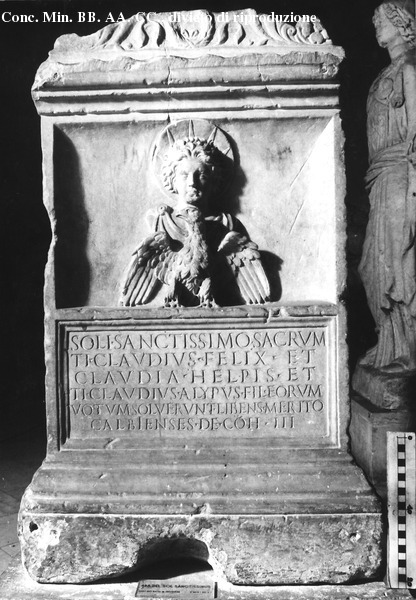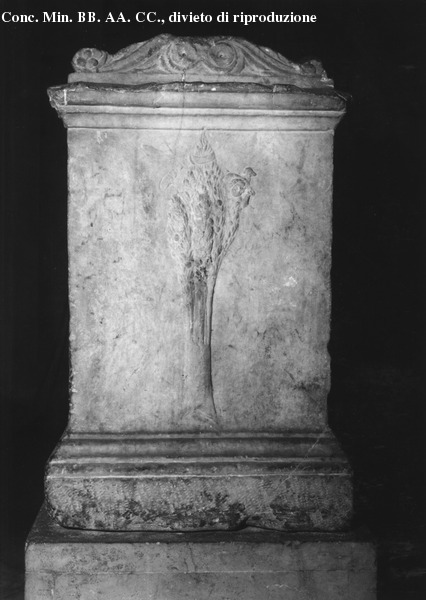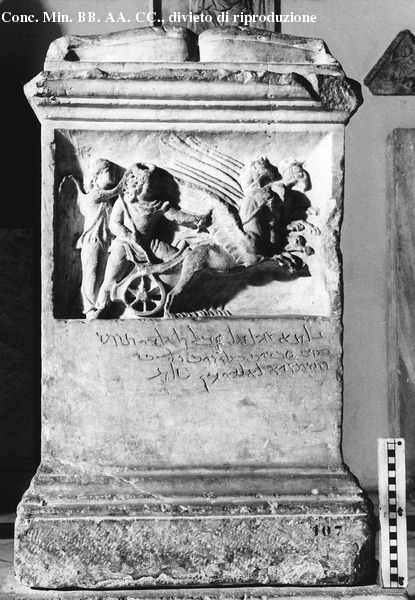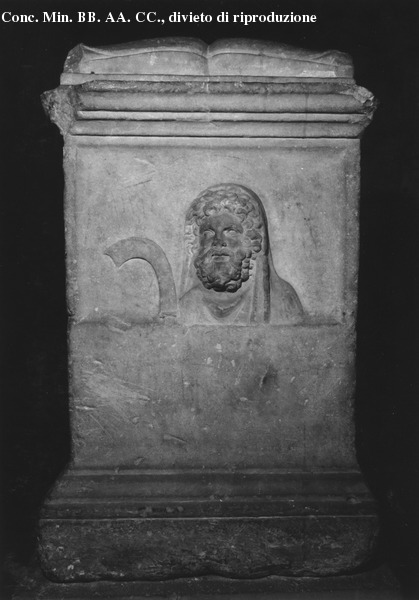In Rome there had never been one people, neither one religion, and as the Empire expanded the City hosted many cults and these contaminated one another. We can easily see this kind of internationalism in this altar from Vigna Bonellii, in Rome, dedicated to the God Sun, set up in the second half of the first century. It has a dedication in Latin, but also an inscription in Palmyrene on one of the sides, in which Husband (Ti. Claudius Felix, Claudia Helpis and their son Ti. Alypus) express their devotion to Malachbel, identified with the god Sun. Palmyrene Script derived from Aramaic and was used for centuries and during the palmyrene empire, ended by the Emperor Aurelian. The two texts have probably the same intention but the form chosen is rather different. The Palmyrene text declares the provenance of the family and wishes peace to the gods, the Latin text uses typical formulas for a dedication which are omitted in the palmyrene. There are other bilingual inscription from the same find spot, which confirm the presence of a substantial community from Syria which practiced its own cults in Rome.




